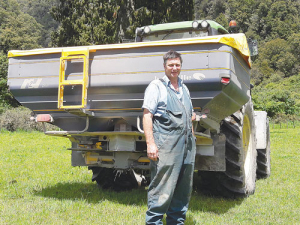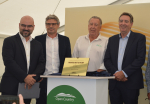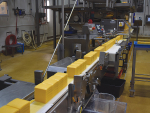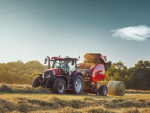Murray Coates and his four employees milk 800 cows on 320ha of grazing blocks and 200ha of runoffs in the isolated Haupiri Valley.
His constant striving to improve efficiency has technology playing a part, notably a new Bogballe M2W fertiliser spreader.
Complementing a 6-tonne trailed machine already at the property, the Bogballe M2W three-point linkage spreader has a 3000L hopper, weigh scales and an iZurf GPS controller with dynamic section control.
Coates says they have always used GPS.
“The property has a lot of waterways that we want to look after, alongside lots of irregular shaped fields that we need to cover. The new machine with dynamic section control with auto shut-off allows us to improve accuracy and avoid overlaps”.
Slightly more expensive than a standard spreader, the M2W is expected to help reduce fertiliser costs by about 6% a year, so it should pay for itself within two years.
Time is of the essence on the West Coast, so the machine’s ability to spread at 32m, rather than the current machine’s 18m, gets the job done faster. The machine has its own GPS system for automatic headland management and section control; the iZurf module puts a wi-fi zone around the spreader allowing any Android device loaded with the Bogballe GPS app to access the spreader’s control system and monitor operation. On Coates’ machine this is a Samsung tablet mounted on the windscreen, allowing control from the tractor seat or it can be taken outside when loading.
The M2W’s ability to provide application records also fits well with how the farm is run, given that cows are weighed after milking and fed individually according to their production.
The iZurf system can record which blocks have been covered, the amount applied and the date and time, which in due course can be expanded into application and proof-of-placement documents for the dairy company and the regional council. This data can be distributed to relevant users by way of an i-Cloud connection.
Coates expects the machine’s ability to interpret Google Maps that highlight waterways and sensitive areas, and create no-go zones where fertiliser will not be applied, will hugely benefit the environment.









